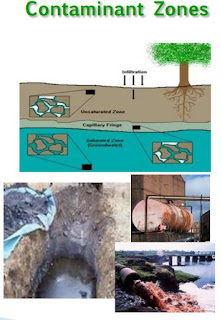APES E Block
01/27/16
Information from Kent Armstrong's Lecture and Presentation
 |
| BioStryke's Website (www.biostryke.com) |
The issue that Kent deals with is not a simple one. Soils and groundwater sources have been contaminated with toxicants, primarily building materials (such as asbestos and silicon), metals (like lead and mercury), and organics (meaning petroleum and solvents). Kent now spends his time dealing with organics, which can be found in things like dry-cleaner solvents. These toxic substances find their way into the ground in a multitude of different ways. For example, leakage from petroleum tanks and improper disposal of waste can lead to an area becoming polluted. Kent described locations such as previous gas stations as highly probable of being contaminated. He also explained to us that these chemicals aren't something to be brushed off lightly. He showed us real world examples of where these toxins can be found, like schools and homes. We are all affected, as students, parents, home owners, etc.
 |
| Some examples of contamination characterization strategies |
As mentioned earlier, the bioremediation process is much more cost-efficient than many alternative solutions available. One such solution is the "hog-and-haul," which is essentially taking contaminated land and moving it to a landfill, one ton at a time. While this provides a quick, easy answer to the issue of soil contamination, it is expensive and non-sustainable. The cost of moving one ton of soil through the "hog-and-haul" method is $100, compared to the $10 per ton of land it costs in the process of bioremediation. Additionally, constantly dumping toxic soil into landfills cannot continue at a constant rate, or all landfills will become too full to hold any more waste. Granted, there are downsides to bioremediating land, namely the duration of the process. While "hogging-and-hauling" is immediate, bioremediation can take three to five years.
 |
| Chlorinated Alkene Dechlorination Pathway |
I personally enjoyed listening to Kent Armstrong speak about what his company does for the cleaning up of the environment. I think his solution of utilizing resources that are already available (meaning microbes) and harnessing their power shows innovation and creativity. However, I feel that despite the financial benefits of bioremediation, it will still be placed on the back burner, at least while solutions like the "hog-and haul" are available. This is because the process is so slow, and because convenience has, and I believe will, take precedence over any financial benefits.

No comments:
Post a Comment